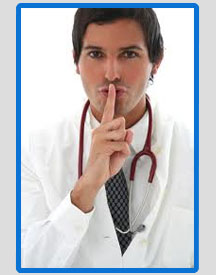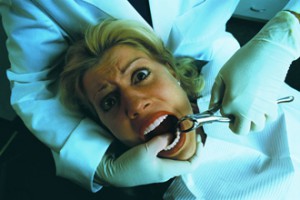Welcome:
:: Posted by nealcmurphy on 09-24-2013How Will Your Child’s Face Grow?
:: Posted by nealcmurphy on 09-12-2013Your child’s face will grow based on three things. In his usual resting mouth posture…
Are the teeth together? Are the lips together? Is the tongue on the roof of the mouth?
With this normal oral posture, the face and teeth will grow optimally. Without this normal oral posture, the face will not grow properly, and any orthodontics will be less stable.
In the video below you will see time lapse (morphs) that show changes in facial structure over a period of several years. Compare the changes in patients who were treated with traditional techniques that pull teeth backwards in the face and/or extractions to the patients who were treated with the non-extraction appliances like those used by Dr Neal C. Murphy.
Call Dr. Murphy’s office to learn more at: 818-905-5050
(Originally uploaded by beyondstraight)
Premature and injudicious extraction of bicuspid teeth has a retarding effect on facial growth the way damage to the growth plate limits the growth of legs. A serious injury in a growing child.
The Science Behind Accelerated Orthodontics
:: Posted by nealcmurphy on 08-06-2013Dr. Neil C. Murphy lectures at the American Academy of Periodontology Annual Meeting.
Innovations inPeriodotics Session 2
Sept. 2005 Denver, Colorado. (Click Links Below for Audio.)
http://drmurphysmile.com/Part_1_of_2_Dr%20Neil_C_Murphy.mp3
http://drmurphysmile.com/Part%202_of_2_Dr%20Neil_C_Murphy.mp3
Images – Perio for Patient Educ.
:: Posted by nealcmurphy on 07-11-2013Gingivitis – Periodontitis
Ridge splitting and Expansion
LSFM and Periodontal regeneration
Patient Information on Gum Disease and Orthodontics
:: Posted by nealcmurphy on 06-27-2013For patients and other interested parties the following is a short summary of periodontal diseases and why they will cause massive tooth loss with time, if untreated.
This is particularly important for the orthodontic patient because braces can turn simple gum inflammation into progressively destructive periodontitis (Pyorrhea) – even in teenagers and young adults. It is estimated that over 50% of orthodontic patients have some kind of damage to their gums (Waldrop T, 2008) and it is estimated that braces can cause permanent damage to the supporting bone in 5-8 % of all orthodontic patients.
Of course, if you have any questions Dr. Murphy is available for elaboration.
Go to the following links to learn more.
Carpe Diem!
Corticotomy and Stem Cell Therapy for Orthodontists and Periodontists: Rationale, Hypotheses, and Protocol
:: Posted by nealcmurphy on 01-09-2013Stem-Cell-Therapy-for-Orthodontists and Periodontists:
This chapter is about Professor EO Wilson’s Consilience: the Unity of Knowledge – it synthesizes periodontics and orthodontics, academics and practice, making the ideal practical. The dental specialties, divided by culture, are inseparable in science and justified by art, like the relationship between architects and structural engineers. The interface between these two disciplines focuses on two aspects: what can orthodontics do for periodontology and what can periodontics do for orthodontics? This chapter first reviews salient points of joint management that may have eluded prior papers on the subject and go into some more depth. So orthodontists can use periodontal knowledge and periodontists can answer the needs of the orthodontist. Safe methods of recognizing and avoiding attachment loss are described along with the use of asymmetric eruption when using forced eruption or molar uprighting. The concept of bone morphing is introduced and a rationale is presented that explains gingival recession as a bacterial infection, not tooth movement complication.
Finally, a method of quantizing infection, probing efficiently, and assigning infection control management tips is briefly and succinctly presented.
The Secrets Revealed
:: Posted by nealcmurphy on 09-18-2012Dear Patients and Friends,
I just finished reading a nice popular article in Reader’s Digest (RD) . RD is both a boon and a bane to our society when it comes to patient advice. It certainly conveys a lot of information efficiently but when complex problems are made too simple the advice becomes erroneous and fraught with misinterpretations. So, the best tactic is to use Reader’s Digest as an “information portal”, a kind of gateway to further study. The information is like an introduction and reading, or worse, judging a book by its introduction only can be dangerous when the information is applied to human care.
Lately, Reader’s Digest has been particularly interested in patient health and welfare and serves as a pretty good information portal for patients. They have a series of articles concerning Secrets They Won’t Tell You. It’s presented as a melodramatic expose but the information itself is merely candid advice we hear and dispense daily. Apparently some doctors are not as candid as we think. so when the information is “revealed” is sounds like some deep, dark secret that is finally “out of the bag.”
The article Secrets Your Hospitals Won’t Tell You,
Secrets Your Dentist Won’t Tell You.
and Secrets Your Nurse Won’t Tell You.
http://www.rd.com/slideshows/50-secrets-your-nurse-wont-tell-you/
are particularly good.
50 Secrets Your Surgeon Won’t Tell You as of Sept, 2012, is not yet on the Internet but it is worth reading on the newsstand. Only 5 items, I believe, are misleading in this particular article:
#23 – “Doctors have an economic incentive to operate”
True: Generally speaking the fees between surgical and non-surgical treatment in medicine and dentistry can indeed be tenfold. However, the cost of repeated non-surgical care that is only temporarily helpful, in the aggregate, over many years can actually exceed the cost of definitive surgery.
However, I understand the prejudice many surgeons have with surgical intervention so our surgical fees and non surgical fees are roughly equivalent. There is no economic incentive to operate in our office. I wish all insurance companies would reimburse doctors performing non-surgical alternative would be justly indemnified. Yet the surgical economic incentive is maintained nationally in all areas of healthcare and it is indeed an unfortunate reality.
#33, 34, 35 -”Doctors have financial incentives to speak on behalf of a product or commercial device”
I have to date four university appointments and I lecture for a number of companies. The honorarium I receive does not allow me a profit and frankly, traveling to another city, lecturing all day and sleeping on a plane back home is not vacation. Yet, occasionally it is professionally gratifying to exchange views with doctors foreign to my immediate colleagues. The reward is professional and emotional, not financial. In fact, factoring opportunity costs into my lecture opportunities makes speaking about a product a net financial loss.
Exception: When the honorarium approaches tens or hundreds of thousands of dollars per year the product/professional conflict of interest becomes real, material and a significant social problem.
#48 “If it ain’t broke, don’t fix it…wait for symptoms”
This is perhaps one of the most dangerous bits of advice the RD editors have rendered. It is true that waiting for signs and symptoms makes one sure that the surgery was necessary. What it ignores of course is those patients who have died because they waited too long – consider strokes and heart attacks. In dentistry, consider pain or loose teeth. When these events occur surely the system is “broken”. But, by that time it is too late. In medicine, one often calls the mortician not the surgeon. Also, even when the surgeon is called, he is treating late stage disease and terminal pathology. Then the objective becomes not definitive cure, but rather symptomatic and palliative, ameliorating the symptoms but not stopping the cause of the problem and certainly not reversing the damage that has occurred because the patient waited too long. A good rule of thumb is to ask, “Doctor when your colleagues decide that surgery is preferable, what course do surgical nurses choose…and when?”
I recommend you spend a few hours on the Internet collecting some of the more salient points these popular articles have proffered and ask me about them when you are interested. Although the RD answers are not always the best or even correct, as a discussion starter they are excellent. One thing we all agree on is this: “An informed patient is a good patient… an asset.”
An uninformed patient, especially an ill-informed patient is a liability, especially to himself.”
Read on…
…and Carpe diem!
Dr. Neal C. Murphy, Clinical Professor, Case Western Reserve University, USC, UCLA (1981-2010)
available for consultation by appointment at (818) 905-5050
A Case for Not Extracting Teeth in Orthodontic Patients
:: Posted by nealcmurphy on 07-13-2012…“I feel that extracting teeth just to give someone a better smile is often tantamount to amputation in medicine…the side effects are worse than the problem to be treated. Extraction, like amputation is a primitive albeit definitive course of therapeutic action to be used ONLY as a last resort.”
– Professor Neal C. Murphy (UCLA, 1981-2010)
View the report here, (Or click the photo above.)
Maxillary Alveolus Development – Cosmetic Dental Arch Expansion
:: Posted by nealcmurphy on 07-11-2012Alveolus Development for broader smiles and more esthetic facial development. This is not stable if done rapidly and non-surgically. It is however more stable if dentoalveolar surgery is employed (Wilckodontics TM) or the supporting bone is enlarged naturally through tissue engineering and facial growth guidance. (Williams Method)
Corticotomy and Tissue Engineering for Orthodontists
:: Posted by nealcmurphy on 07-11-2012A Critical History and Commentary
A scientific manuscript submitted for publication in the journal
Seminars in Orthodontics
by NEAL C. MURPHY DDS, MS*, Clinical Professor
Departments of Periodontics & Orthodontics
Case Western Reserve University
School of Dental Medicine, Cleveland, Ohio USA 44106
Read the full manuscript here…


